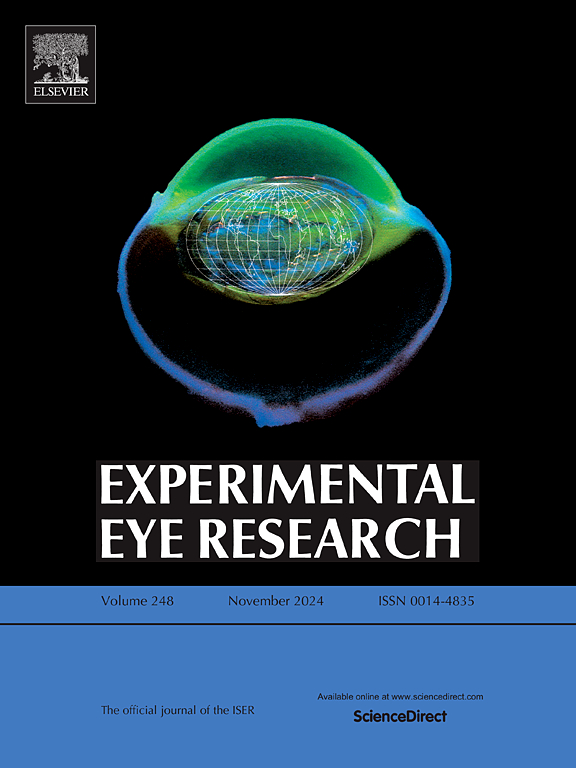CD24 is required for sustained transparency of the adult lens
IF 3
2区 医学
Q1 OPHTHALMOLOGY
引用次数: 0
Abstract
Genes regulate, maintain, and fine-tune the structural organization and physiological homeostasis of the lens and therefore influence lens transparency. RNAseq profiling of the mouse lens revealed that the Cd24a gene, which encodes the mucin-like GPI-linked membrane protein CD24, is abundantly expressed in the lens. Immunolocalization revealed that CD24 protein is abundant at mouse lens fiber cell membranes from early lens development into adulthood, while in adult human lenses, CD24 protein was detected in both the lens epithelium and fibers. Analysis of mice lacking the Cd24a gene revealed that the lens develops normally and is transparent with normal morphology until 2 months of age. However, older Cd24a null mice have smaller than normal lenses which exhibit abnormal fiber cell structure, actin filament disorganization, and refractive defects that lead to premature cataract development by 1 year of age. By integrating RNA sequencing, immunofluorescence, and magnetic resonance imaging, we found that the aquaporin 1 gene that regulates lens epithelial water transport is downregulated and the protein gradient that mediates the lenses refractive properties is altered in aged Cd24a null lenses that exhibit cataract. However, experiments on intracellular gap junction coupling and hydrostatic pressure in 2 month old lenses found no differences between control and Cd24a null lenses, suggesting that the later lens defects do not arise from primary issues with the lens circulation. Overall, our study found that CD24 plays a key role in maintaining the structural organization and refractive properties of the adult lens.
求助全文
约1分钟内获得全文
求助全文
来源期刊

Experimental eye research
医学-眼科学
CiteScore
6.80
自引率
5.90%
发文量
323
审稿时长
66 days
期刊介绍:
The primary goal of Experimental Eye Research is to publish original research papers on all aspects of experimental biology of the eye and ocular tissues that seek to define the mechanisms of normal function and/or disease. Studies of ocular tissues that encompass the disciplines of cell biology, developmental biology, genetics, molecular biology, physiology, biochemistry, biophysics, immunology or microbiology are most welcomed. Manuscripts that are purely clinical or in a surgical area of ophthalmology are not appropriate for submission to Experimental Eye Research and if received will be returned without review.
 求助内容:
求助内容: 应助结果提醒方式:
应助结果提醒方式:


